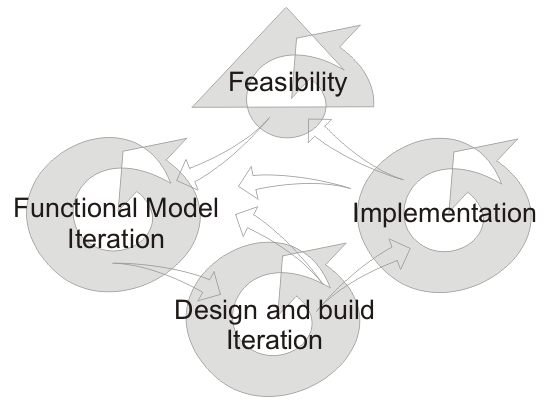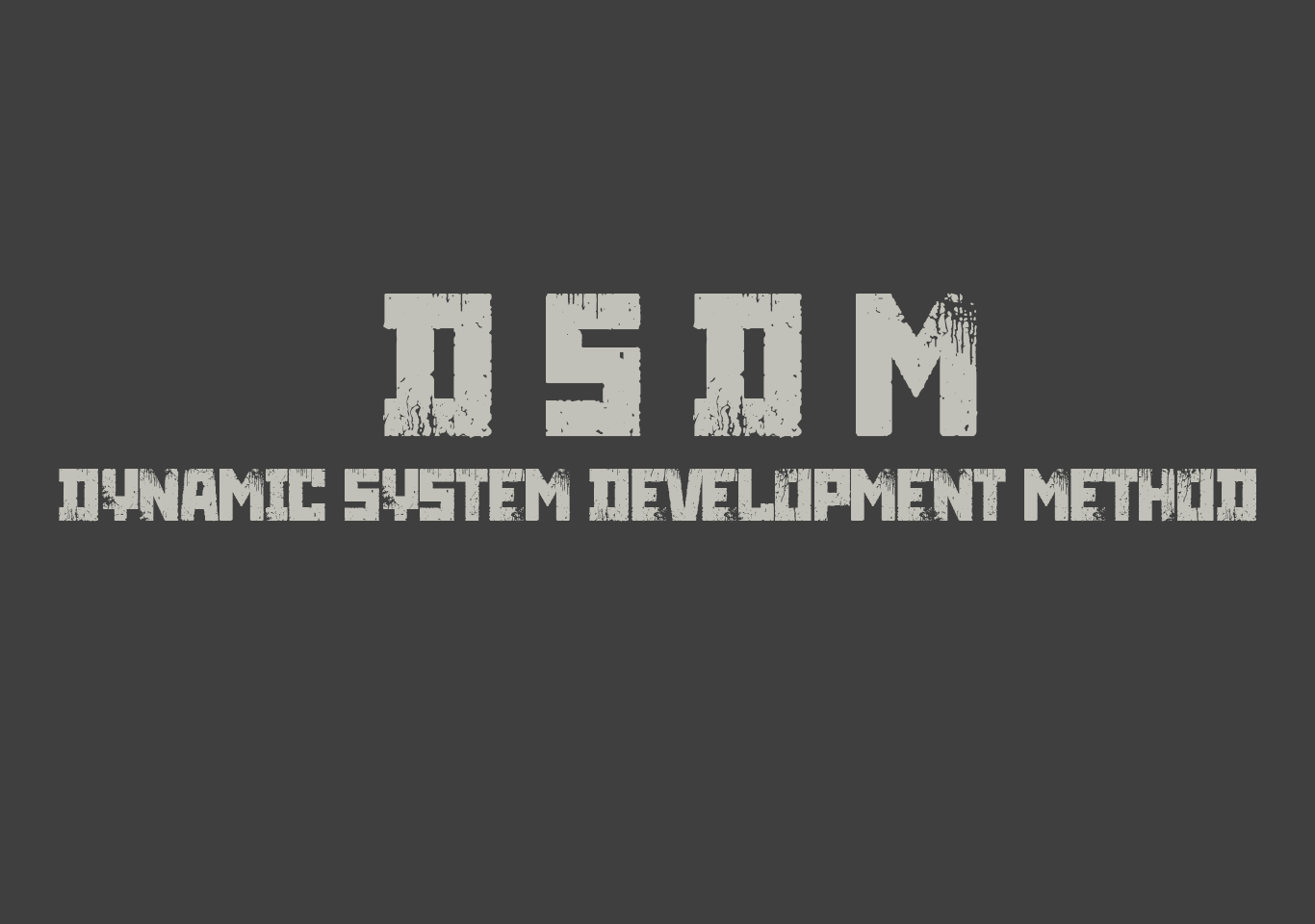Introduction
The DSDM method, or Dynamic Systems Development Method, is an Agile project delivery paradigm that features the collaborative and rapid creation of business solutions.
The DSDM method(Dynamic System Development Method) is an Agile project management and software development paradigm that focuses on rapid, iterative delivery of business solutions. DSDM, which was first introduced in the United Kingdom in 1994, provides a structured yet flexible approach to ensuring that projects are completed on time, within budget, and by business requirements. It states that any project must be aligned with clearly defined strategic goals and focus upon early delivery of real benefits to the business. DSDM focuses on huge development in less time. DSDM is a different model from the others.
DSDM methodencourages active user involvement, frequent product delivery, and close collaboration between stakeholders and developers. It follows a defined lifecycle that includes phases such as feasibility, foundations, exploration, engineering, and deployment, allowing teams to construct solutions incrementally while receiving constant feedback. One of DSDM’s important elements is the MoSCoW prioritization technique, which helps teams determine what features or tasks should be delivered first to maximize business value and ensure successful delivery within fixed time and budget constraints.

Key principles of the DSDM method
There are 8 principles of the DSDM method.
- Focus on the business need
- Deliver on time
- Collaborate
- Never compromise quality
- Build incrementally from firm foundations
- Develop Iteratively
- Communicate continuously and clearly
- Demonstrate control
Development phases of the DSDM method
Pre-project
The pre-project phase verifies that the planned project is worthwhile and in line with organizational objectives. It focuses on determining business requirements, estimating high-level resources, and confirming early feasibility. This phase entails identifying stakeholders, recognizing early risks, and developing a business case for executive approval. It lays the groundwork by determining if the project should go into formal DSDM phases.
A project mandate, early planning documents, and stakeholder commitment are among the key results. Importantly, it avoids spending time and money on non-viable projects. This phase guarantees that all of the necessary prerequisites are met before investing major resources or assembling an entire development team.
Feasibility study
The Feasibility Study step analyzes whether the project can practically accomplish corporate objectives with DSDM. It evaluates technical feasibility, organizational readiness, and financial viability. The emphasis is on addressing the question, “Is this project worth doing, and can it be done effectively using DSDM principles?” It entails a quick assessment of system architecture, potential restrictions, available talents, and critical dangers.
This phase assists in determining whether to move forward with a full-scale development effort or to reevaluate project scope. The deliverables comprise a Feasibility Assessment and an updated Business Case. It’s a quick but important hurdle to confirm that investment in the next phase is justified and that DSDM is the best fit.
Business study
During the Business Study phase, extensive analyses of business processes, objectives, and user needs are performed. It describes the business environment and highlights the primary functions that the system should support. This phase brings together both business stakeholders and technical team members to plan out how the solution will provide value.
High-level functional requirements, system architecture, and quality standards are defined. Tools such as process models and prototypes can be used to visualize solutions. It also lays the framework for planning and resource allocation in subsequent versions. The Business Area Definition, System Architecture Definition, and revised Requirements Catalogue are all key outputs that help the project align with real-world business demands.
Functional model iteration
The Functional Model Iteration phase focuses on developing and enhancing the system’s functionality in short, time-limited cycles. Using iterative prototyping and ongoing user feedback, the team creates models and interfaces that replicate actual system functionality. These iterations serve to confirm business requirements and improve usability early in the lifecycle.
The MoSCoW technique is used to prioritize functional areas, ensuring that key aspects are handled first. Each iteration produces functioning prototypes that, while not production-ready, properly illustrate how the system will operate. This phase is critical for reducing misunderstandings and enabling continued collaboration among developers and stakeholders.
Design and build the iteration
During the Design and Build Iteration phase, the project progresses from conceptual prototypes to a functional, production-ready solution. This phase is dedicated to integrating components, improving architecture, and completing both functional and non-functional factors such as performance, security, and data integrity. Developers and testers collaborate to create usable increments that match agreed-upon specifications.
Feedback from previous functional models informs design decisions. Each increment is thoroughly tested to ensure quality. Timeboxing continues to manage scope, while MoSCoW prioritizing ensures that key features are finished first. The objective is to produce a fully functional system increment that is ready for deployment or final integration.
Implementation
The Implementation phase introduces the completely created solution into the live business environment. The process includes final testing, user training, data migration, and handover to operational support. Depending on the project’s complexity and business requirements, the deployment can take place in stages or as a single release. This phase ensures that users are prepared to utilize the system efficiently and that appropriate support mechanisms are in place.
It also includes a final evaluation to ensure that the solution fits the Business Case objectives. A deployment plan, user acceptance sign-off, and support manuals are among the key deliverables. Successful implementation leads to tangible business benefits and full user adoption.
Post-project
The post-project phase entails analyzing the completed solution to assess long-term business advantages and seek feedback for future enhancements. It determines whether the project achieved its initial objectives, kept under budget, and delivered the projected value. Lessons learnt are documented and shared among teams. Maintenance and support procedures have been confirmed to ensure the system’s long-term reliability.
This period also provides an opportunity to complete financial and administrative chores. Key activities include a post-implementation review, performance analysis, and gradual enhancement planning. The post-project phase guarantees that the value given is maintained and that the organization’s project delivery procedures are continually improved.
MoSCoW Prioritization in DSDM
A unique feature of DSDM methodis MoSCoW prioritization, which ranks requirements into four categories:
- Must Have: Essential requirements.
- Should Have: Important but not critical.
- Could Have: Nice to have; included if time permits.
- Won’t Have (this time): Not planned for this release.
Real-Life Example of DSDM method
A real-life case study of DSDM implementation. The UK Government Digital Service (GDS). The UK government has used DSDM in several of its digital transformation programs. By utilizing DSDM:
- They ensured adherence to stringent policies.
- We made early usable versions available to the public.
- Increased user satisfaction and service efficiency.
- Maintain control through accurate documentation and audit trails.
Benefits and Drawbacks of DSDM method
Benefits
- On-Time and Within Budget Delivery
DSDM method emphasizes set time and cost limitations to ensure projects are completed on time and under budget. - Business-Centric Approach
By concentrating on business goals and incorporating stakeholders throughout the project, DSDM methodensures that the end result adds actual value. - Iterative Development.
DSDM encourages iterative and incremental development, enabling regular feedback and ongoing improvement. - Enhanced Collaboration
The strategy promotes active cooperation among developers and stakeholders, resulting in improved communication and understanding. - Flexibility in scope.
DSDM uses the MoSCoW prioritizing technique to provide flexibility in revising project scope in response to changing requirements. - Risk Management
Early and ongoing testing in DSDM aids in the rapid identification and mitigation of risks. - Quality Assurance
DSDM includes testing throughout the development process, ensuring that quality is never compromised. - Clear roles and responsibilities. DSDM assigns specified roles to team members, guaranteeing clear duties and efficient workflow.
- Adaptability to Change The iterative nature of the process enables teams to adapt to changes with minimal disturbance.
- Comprehensive Framework DSDM provides a comprehensive framework for all areas of project delivery, from inception to post-project assessment.
Drawbacks
- Resource Intensive
Implementing the DSDM method can be expensive, requiring substantial resources and effort. - Complexity of Implementation
The complete scope of the DSDM method might make it difficult to adopt, particularly for organizations new to Agile techniques. - Requires skilled personnel.
Successful DSDM method initiatives require team members who possess specialized skills and experience, which may not always be available. - High Stakeholder Involvement Required
DSDM necessitates ongoing participation from stakeholders, which can be demanding and not always practicable. - Not suitable for little projects.
Because of the resource needs, DSDM may not be suitable for small-scale initiatives or organizations with limited finances. - Potential for Reduced Creativity
The regimented approach of DSDM may limit developers’ creativity because it prioritizes adherence to predetermined protocols. - Time-Consuming
The thoroughness of DSDM method can result in lengthier project schedules, particularly during the early phases. - Rigid Structure
While DSDM is flexible in scope, its overall structure can be stiff, thereby impeding rapid change. - Overhead in Management
The method’s focus on documentation and process can result in higher management overhead. - Challenging for Distributed Teams
DSDM’s focus on in-person communication and cooperation might be difficult for geographically distributed teams.


